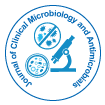

Asmae GRIDDA
Autism spectrum disorder, is a condition characterized by abnormal development of the child, primarily social, relational, and communicational. The disease exists in varying degrees, with shapes that allow verbal expression and a life more or less independent and much deeper troubles with very stereotyped behavior, the age of diagnosis and effective therapies are the areas that will need to work seriously in the future. Medicinal plants are the oldest and the most common form of medication against health issues. Several studies have demonstrated that plant extracts and their secondary metabolites represent an interesting source for drug discovery. Alkaloids, a major group of naturally occurring organic nitrogen-containing bases, have been shown to be implicated in many physiological processes through the modulation of ion channels, in particular, voltage-gated calcium channels. Methods: To carry out this research, we questioned several autistic relatives with the help of the collective autism Morocco (group of associations in Morocco), the questionnaire was a Google forms document Online. The questions were related to the age of diagnosis, type of symptom, and the treatment methods used by parents of autistic children. β-carboline Alkaloids: Harmala alkaloids Harmaline, Harmane. The βcarbolinesHarmaline and Harmane are the active principles present in the seeds of Peganum harmala as well as in other medicinal plants such as Banisteriopsis caapi(Fig. 2) (Handforth, 2012). A growing body of reports have shown the endogenous distribution of these harmala alkaloids in different mammalian tissues where they have been suggested to exert various pharmacological actions (Parker et al., 2004; Miralles et al., 2005; Herraiz et al., 2006b; Herraiz et al., 2006a). Harmala alkaloids have been implicated in neurodegenerative disorders but also in neuroprotective processes because of their interaction with a large array of neurotransmitter receptors and ion exchangers. They have been shown to bind GABAA receptors (Rommelspacher et al., 1980), activate 5HT2A et 5HT2C receptors (McCormick et al., 1998), induce the impairment of Na+ proton exchange and mitochondrial monoamine oxidase enzymes (Glennon et al., 2000; Anderson et al., 2003; Grella et al., 2003; Herraiz et al., 2010). Furthermore, studies have demostrated their ability to modulate ion channels (INa, IK), in particular VGCC. Haraki et al. have reported that the efficiency of Peganum harmala in treatment of colic is due to its antispasmodic effect resulting from the inhibition of intestinal calcium channels by the harmala alkaloids especially harmaline (Karaki et al., 1986). Recent electrophysiological studies showed that harmala alkaloidsinhibitHVA (ICa,L ICa,N) and LVA (ICa,T) currents expressed in rat dorsal root ganglion (Fig. 2)(Splettstoesser et al., 2005) and olivary neurons (Park et al., 2010; Zhan et al., 2012)over a wide range of voltage potentials and in a dose-dependant manner, indicating their potential implication in neuroprotective processes. The results showed that Moroccans are increasingly informed about the disease and that they already use a several known methods to overcome autism. In conclusion Autism is a multifactorial disease whose symptoms can be totally different, a causal relationship about therapies and noticed symptoms leads to a special therapeutic orientation for each case of autism. Morocco is developing country and now also about this pathology, associations manage to identify autism cases in all cities to conduct a policy that starts by giving autistic right both as normal individuals until the standardization of care and therapies.